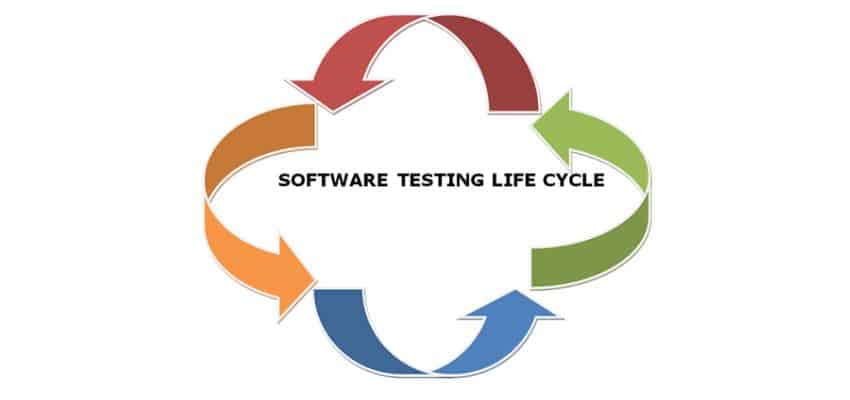Optimize Your Projects Using the Software Testing Life Cycle

The software testing life cycle (STLC) is a crucial aspect of software development that ensures quality and performance before a product reaches end-users. In an era where software products are constantly evolving, understanding the STLC can help organizations streamline their processes, enhance collaboration, and ultimately deliver superior products. This article explores how optimizing your projects through the STLC not only enhances product reliability but also fosters a culture of continuous improvement.

Understanding the Software Testing Life Cycle
Before diving into the nuances of optimization within the STLC, it’s essential to clarify what the software testing life cycle entails. The STLC is a series of phases that guide the testing process in software development, ensuring that every aspect of the software is scrutinized for quality assurance. These phases include requirement analysis, test planning, test case development, environment setup, test execution, defect reporting, and closure. Each phase plays a critical role in identifying flaws, verifying functionality, and validating requirements.
The Importance of Requirement Analysis
Requirement analysis is the first step in the software testing life cycle, serving as the foundation for all subsequent testing activities. It’s during this phase that testers gather detailed information about what the software should achieve.
Involving stakeholders early on allows testers to understand not just the functional requirements but also non-functional aspects like performance, security, and usability. This comprehensive understanding leads to precise test strategies and helps avoid ambiguities down the line.
By having a clear-cut requirement analysis, teams can be proactive rather than reactive. Clear definitions reduce the risk of misunderstandings and misalignment between developers and testers, paving the way for a smoother workflow throughout the project.
Crafting a Robust Test Plan
Once the requirements are analyzed, the next step is to create an effective test plan. A well-crafted test plan serves as a roadmap for the entire testing process, outlining objectives, scope, methodologies, resources, timelines, and risk assessments.
An effective test plan will identify the types of testing required, whether it’s unit testing, integration testing, or system testing. It should also specify the tools and environments needed for testing, enabling testers to prepare adequately.
Effective communication and collaboration among team members are vital when formulating the test plan. Feedback from developers, business analysts, and even clients can provide insights that refine the plan and enhance its effectiveness. Thus, a collaborative approach significantly contributes to the robustness of the test plan.
Developing Comprehensive Test Cases
The development of test cases is a critical phase in the software testing life cycle. Test cases act as the instruction manual for testers, detailing the steps necessary to validate the software functionalities against defined requirements.
Each test case should be meticulously designed to ensure coverage of all functional and non-functional requirements. Emphasizing edge cases and boundary conditions is equally important, as they often reveal vulnerabilities that standard test cases may overlook.
Moreover, automation can play a significant role in developing test cases, particularly for repetitive tasks. Automated test cases can increase efficiency and accuracy while reducing human error. As such, combining both manual and automated testing strategies can lead to more thorough coverage and faster turnaround times.
Executing the Testing Phase Efficiently
After developing test cases, it’s time to execute them. This phase requires meticulous attention to detail and adherence to the test plan. The objective is to put the software through its paces, evaluating its performance under various conditions.
Setting Up the Testing Environment
The testing environment must closely mimic the production environment to obtain accurate results. Setting up the right environment involves configuring hardware, software, network settings, and any other components critical for replicating real-world conditions.
It’s also essential to establish a baseline for performance metrics during the setup phase. This baseline will serve as a comparison point for analyzing the software’s response to different tests. Ensuring that the testing environment is aligned with end-user configurations can significantly impact the reliability of the results.
A solid setup diminishes discrepancies arising from environmental variations, leading to more reliable outcomes and better identification of defects.
Conducting Tests and Documenting Results
Once the environment is in place, testers can start executing the test cases. During this stage, systematic documentation is crucial. Each executed test case should have recorded results, including pass/fail status, execution time, and any anomalies encountered.
Thorough documentation not only aids in tracking progress but also serves as a reference for future testing cycles. If defects are identified, documenting detailed findings can help developers pinpoint issues more efficiently.
Additionally, fostering a culture of open communication during testing allows immediate knowledge sharing among team members. Quick discussions about findings or challenges can lead to collective problem-solving, enhancing overall productivity.
Defect Management and Reporting
Defect management is a vital component of the software testing life cycle. This phase involves identifying, logging, prioritizing, and tracking defects. A structured defect management process facilitates efficient resolution of issues.
Categorizing defects based on severity and impact can help prioritize which issues need immediate attention. Establishing clear criteria for defect resolution assists in maintaining focus and ensures that critical flaws do not hinder project timelines.
Furthermore, effective communication with developers about defects is crucial. Providing comprehensive information, including steps to reproduce the issue and the context in which it occurred, empowers developers to resolve problems effectively. This collaboration can significantly improve the overall quality of the final product.
Closure Activities in the Software Testing Life Cycle
The closure activities within the software testing life cycle are crucial for assessing the effectiveness of the testing process and for preparing the team for future projects. This phase encompasses several key activities that encapsulate the learnings from the current project.
Analyzing Test Metrics and Reporting
Test metrics are valuable for measuring the efficiency and effectiveness of the testing process. By analyzing these metrics, teams can gauge areas of strength and identify improvements needed for future projects. Key metrics may include the number of test cases executed, pass/fail rates, defect density, and test coverage.
Creating detailed reports synthesizing these metrics provides stakeholders with insights into the overall quality of the software. It also aids in showcasing the value of the testing efforts to upper management, reinforcing the necessity of a robust testing strategy in software development.
Moreover, leveraging historical data from past projects can inform decision-making going forward. Such insights can shape strategies and optimize resource allocation.
Retrospective Meetings for Continuous Improvement
Conducting retrospective meetings after a project concludes allows teams to discuss what worked well and what didn’t. This practice fosters a culture of continuous improvement, encouraging candid feedback and open discussions.
During these meetings, team members can share experiences, address pain points, and brainstorm solutions for future endeavors. Lessons learned from one project can significantly influence practices in subsequent projects, making testing processes more robust over time.
Encouraging participation from all team members, regardless of seniority, strengthens collaboration and supports a unified vision for quality assurance.
Knowledge Transfer and Documentation
Finally, the closure phase should include proper documentation and knowledge transfer. Compiling all materials used throughout the testing process — such as test plans, test cases, defect logs, and lessons learned — creates a repository of information that can benefit future projects.
Knowledge transfer sessions can be organized to educate new team members, ensuring that they have access to the accumulated wisdom of previous projects. This practice not only saves time but also helps maintain continuity in quality assurance efforts across different teams and projects.
By strategically capturing and sharing knowledge, organizations can foster a learning environment that significantly enhances their software testing capabilities.
Conclusion
Optimizing your projects using the software testing life cycle is not merely about adhering to a set of processes; it’s about creating a culture of quality and continuous improvement. Each phase of the STLC plays a vital role in ensuring that software meets the highest standards before reaching users.

